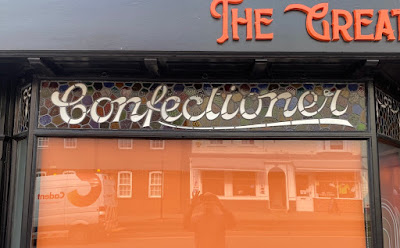Music for a long while
On several occasions when exploring English buildings I’ve come across ancient carvings of musicians. Blog posts from years ago have featured a bagpiper in Cornwall and a player of a medieval woodwind instrument called a rackett in Gloucestershire. Some years ago in Cornwall again, visiting St Mary Magdalene’s church at Launceston, I found a whole band of musicians carved into the stone of the outside walls.
Launceston church, like many in Cornwall, is built of local granite, one of the hardest of all stones and difficult, for that reason, to carve. Yet the stonemasons of Launceston, rebuilding the church in around 1511, were determined to decorate it as ornately as any other. In fact I can’t think of another English parish church so richly encrusted with carvings – Pevsner says that the building is decorated with ‘barbarous profuseness’. I’d not use such loaded language. I find the carvings fascinating, and I’m awed by the masons who could carve this intractable material, even though the granite’s hard surface means that they could not carve with the depth or detail that they might have achieved in, for example, limestone.
Amongst the decorative profusion – leaves, ferns, roses, thistles, pomegranates, heraldry – are several relief carvings showing musicians (in the upper left part of my photograph: click it for an enlargement). In the photograph are a fiddler, a lutenist, and a harpist, forming a kind of procession led by an official or cleric with a chain around his neck. Other panels show a bagpiper and a shawm player. Some or all the musicians are probably members of a group called the Confratrie Ministralorum Beate Marie Magdalene (the Brotherhood of Minstrels of Blessed Mary Magdalene), and so were almost certain to have played in St Mary Magdalene’s church.* Some scholars believe that, this being the case, the carvings of the instruments would have been quite realistic, unlike carvings of instrumentalists on gargoyles, for example, which were more likely to have been caricatures, and unlike angels carved in roofs, where ‘realism’ has to be aided by imagination and where the instruments may be generic. Alas! the wear and tear of time, together with the granite’s toughness, have scuppered our chances of making out much detail today.
Nevertheless, one of the joys of visiting old churches is the evidence they give of the activities of the past generations who built and used them. It’s good to find these musicians here and to think about the kinds of sounds they might have made in a market town in Cornwall some 500 years ago.
- - - - -
* St Mary herself, resting with her pot of ointment, is visible to the right of the musicians.






